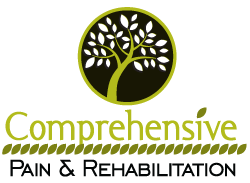Stories of Hope
Chronic Pain Sufferers Find New Hope in Innovative Spinal Cord Stimulation Therapy
Daphne, AL (September 5, 2012) - In 1991, Pat Foster’s vehicle was hit by a logging truck, resulting in the rupturing of a disc in his back. Four back surgeries and 21 years later, the pain he experienced had become debilitating. “It was constant, to the point I didn't want to live anymore. Imagine a burning sensation, 24-7, in your low back, buttocks, shooting down both legs and into the feet. It felt like I was walking on golf balls,” explains Foster, AGE, of Bay Minette, AL.
An insurance adjustor and part-time pastor, Mr. Foster had always been an outdoorsman--- hunting whitetail deer, fishing and clearing land by tractor. He also volunteered in construction, lending a helping hand to friends in need. All of that came to a halt.
“After 38 years of marriage, my active, amiable husband was gone, replaced by someone I didn't recognize. He was withdrawn and irritable because of the chronic pain. His personality completely changed,” notes Kay Foster, Pat's wife. The couple's trips to visit out-of-town children ended. And although Foster continued to work, he would retreat to bed at 5pm each day, weary from the pain.
Foster's pain management physician said he could do nothing more, other than offer morphine. “It just wasn't an option to me. I didn't want to be labeled disabled,” Foster explains.
 Then, Foster learned of an innovative treatment option called a spinal cord simulator. Like a pacemaker for the spinal column, the device works by interrupting the nerve endings that register pain. Smaller than the size of a cell phone, the device is implanted under the skin near the hip.
Then, Foster learned of an innovative treatment option called a spinal cord simulator. Like a pacemaker for the spinal column, the device works by interrupting the nerve endings that register pain. Smaller than the size of a cell phone, the device is implanted under the skin near the hip.
But would it work for Foster? A temporary stimulator worn for a trial period of four days would determine the answer. “I felt immediate relief. I couldn't believe it!” Foster exclaims. “It was like a miracle.”
“The spinal cord stimulator puts an electrical road block between the source of the pain and where the pain is sensed and experienced in the brain,” says Dr. Thomas Yearwood a pain medicine specialist with Comprehensive Pain & Rehabilitation, located in Daphne, Pascagoula andBiloxi, who treated Foster. “In place of their painful sensation, the patient feels a comfortable massaging feeling.” (Photo: Dr. Thomas Yearwood)
“While older versions of the device have been around for years, the newer models don’t require major surgery to implant,” Yearwood continues. “Chronic pain robs people of dignity,” Yearwood explains. “We see a lot of people who have gone through surgery and are still hurting.”
About 116 million Americans suffer from chronic pain, according to a recent study by the Institute of Medicine. And all that suffering comes with a hefty price tag. The same report found that in 2010, the total annual cost of health care due to pain was as much as $635 billion in the United States. That figure combines the medical costs of pain care and the economic costs related to disability days and lost wages and productivity, according to the IM report.
Spinal cord stimulators are often used in the treatment of failed back surgery syndrome (FBSS) as well as complex regional pain syndrome (CRPS). The device implanted in Foster’s lower back was made by Boston Scientific.
“I can't say enough nice things about Yearwood and the staff at Comprehensive Pain & Rehabilitation,” Foster shares. “He came in on Memorial Day, a holiday, to perform my surgery so I would be in recovery by my daughter's June 16 wedding. They totally accommodated me.”
“This surgery changed our lives. I've got my husband back,” enthuses Mrs. Foster.
Fact Sheet - Spinal Cord Stimulation
- Spinal cord stimulation, in use for more than 40 year, has proven to be safe and effective.
- Spinal Cord Stimulation (SCS) uses electrical signals to mask the perception of pain traveling from the painful area to the brain. In place of pain, patients feel a mild tingling sensation called paresthesia.
- During an outpatient procedure, the device is implanted under the skin. It is smaller in size than a cell phone.
- SCS can provide long-lasting pain relief and can be used in conjunction with other therapies. Patients are able to control the intensity of the therapy, as well as turn it on and off using a remote control.
- SCS is indicated for Failed Back Surgery Syndrome (FBSS) and Complex Regional Pain Syndrome (CRPS).
- The device is designed to cover several pain areas at the same time.
Source: Boston Scientific's website, controlyourpain.com
